The PPSh Submachine Gun: Russia’s Savior?
August 17th, 2021
7 minute read
Private Pavel Ivanovich Andreyev was terrified. In his 18 short years on this planet, he had never imagined things could be so bad. He sat perched atop a growling T34 as it rumbled forward in the plains near the Soviet city of Kursk.
It was August of 1943. The sky was blue, and the sun beat down like a furnace. Littering the countryside around him were the hulks of hundreds of derelict armored vehicles.
The stench of rotten death penetrated the foul diesel exhaust bellowing from the T34. The ghastly smell seemed to soak into his flesh. Pavel wanted desperately to go home.
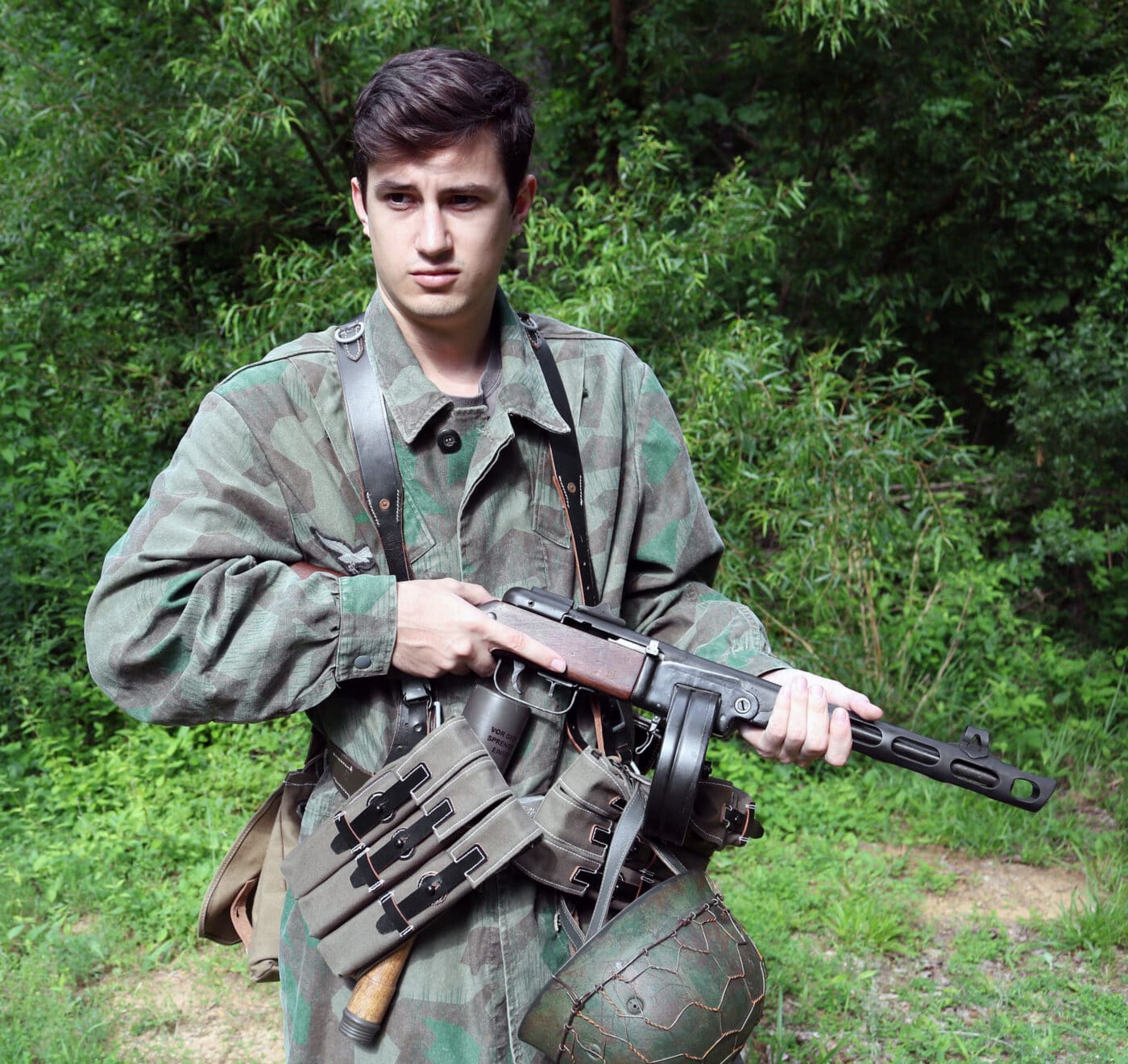
Private Andreyev held his PPSh submachine gun in a death rictus. Andreyev and his comrades called the simple little bullet hose the “Papasha” or “Daddy.” Simplistic to the point of crudity, the PPSh nonetheless offered a simply breathtaking volume of close-range fire. Some Soviet formations sported entire companies armed solely with these fast-firing monsters.
The PPSh could be fed via either 71-round drums or 35-round stick magazines. Andreyev’s gun carried a drum. He had another drum magazine hanging from his belt in a canvas pouch. He felt the massive T34 slow down slightly before the very sky itself split asunder.
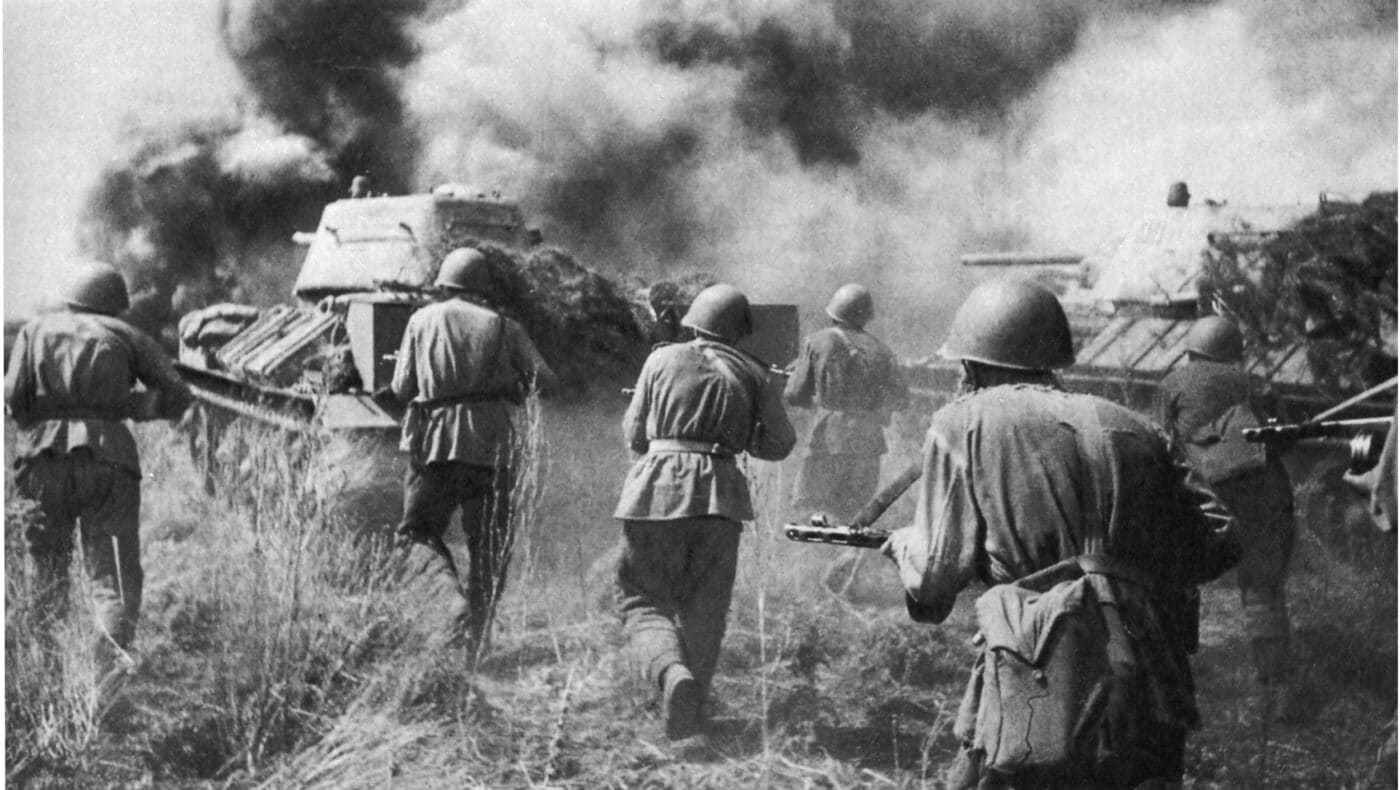
It was a German antitank gun, likely a feared Flak 88, and it pitched the Russian tank like some kind of toad. The shock threw Private Andreyev and the rest of his rifle squad viciously to the ground. Andreyev regained his wits moments later and rolled over. Andreyev realized he had to move or he was going to die.
The Soviet tank was now brewing up, its ammunition cooking off like the sulfuric effluvium of hell itself. In desperation Private Andreyev rolled into a nearby trench.
Miraculously, his Papasha was still slung around his neck. The young Russian fell heavily to the soft earth and willed himself not to panic. As he stood unsteadily to his feet four German Landsers came tearing around the corner on top of him. All five young soldiers were comparably surprised.
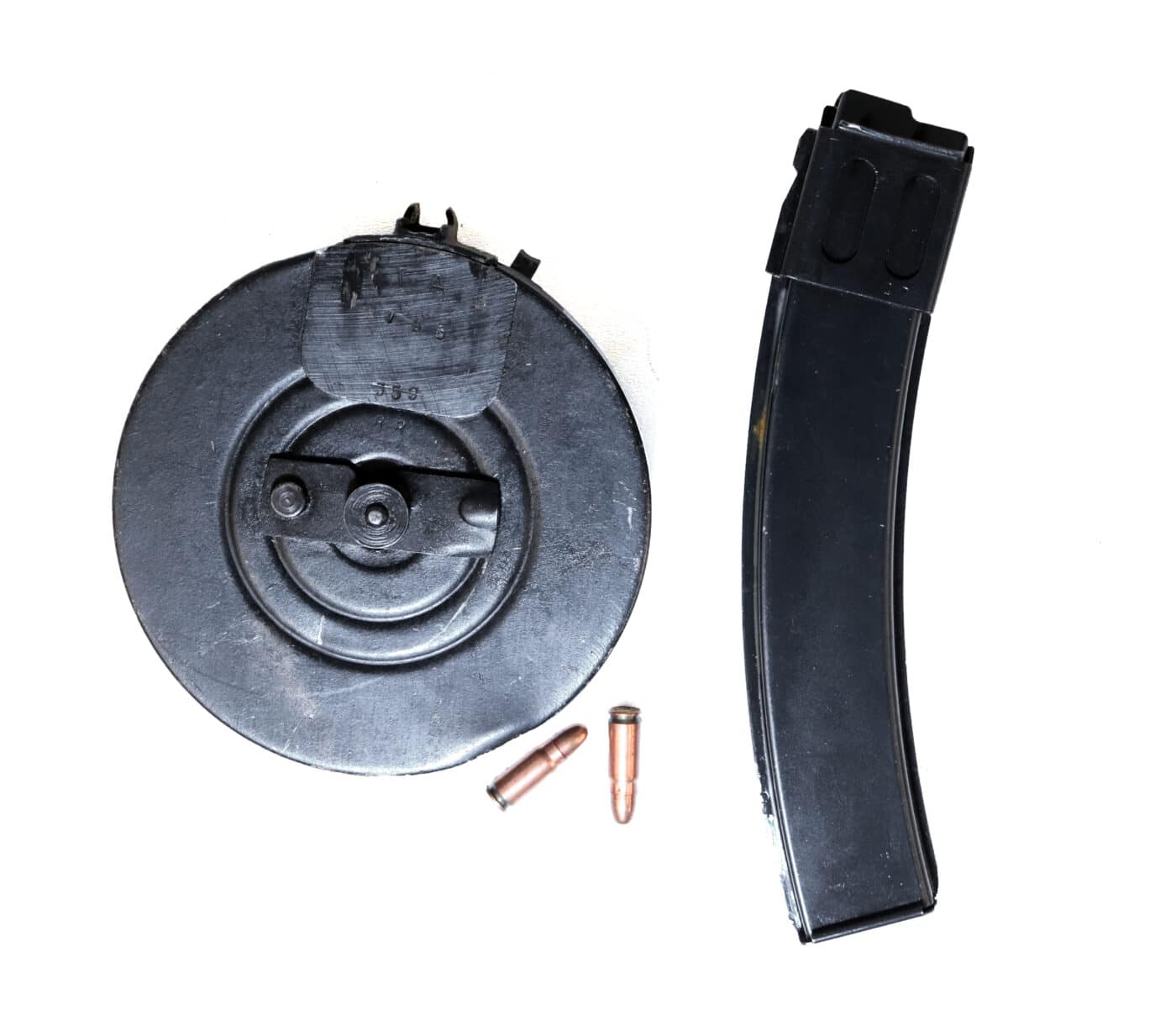
The Germans carried bolt-action Kar98k rifles, and they all four raised them up as one spontaneously orienting in Andreyev’s direction. For his part, Private Andreyev did not think. He simply angled his Papasha from the hip and torqued down on the trigger. The PPSh spewed death within the tight confines of the trench at fifteen rounds per second. All four Germans went down.
Five seconds later Andreyev’s subgun fell silent, steam and smoke rising from its hot barrel. Without conscious thought Private Andreyev removed the empty drum and had a fresh one in place. He carefully stowed the expended drum in his ammo pouch for reloading. Andreyev got his wits about him, jacked the bolt on his SMG to the rear, and headed down the trench in search of trouble.
Tactical Details
The short-range, high-volume capabilities of the PPSh changed the way the Soviets prosecuted infantry engagements. Where previously rifle marksmanship was assumed to be the lynchpin to successful infantry actions, now the typical Soviet grunt thusly equipped was simply a bullet hose. One angry PPSh was impressive. One hundred at once was an irresistible force.
PPSh stood for “Pistolet-Pulemyot Shpagina” or literally “Shpagin’s Machine Pistol” after its designer Georgy Shpagin. An evolutionary development of the previous Soviet PPD, the PPSh was intended from the outset to be optimized for mass production. The PPSh first saw action in 1941.
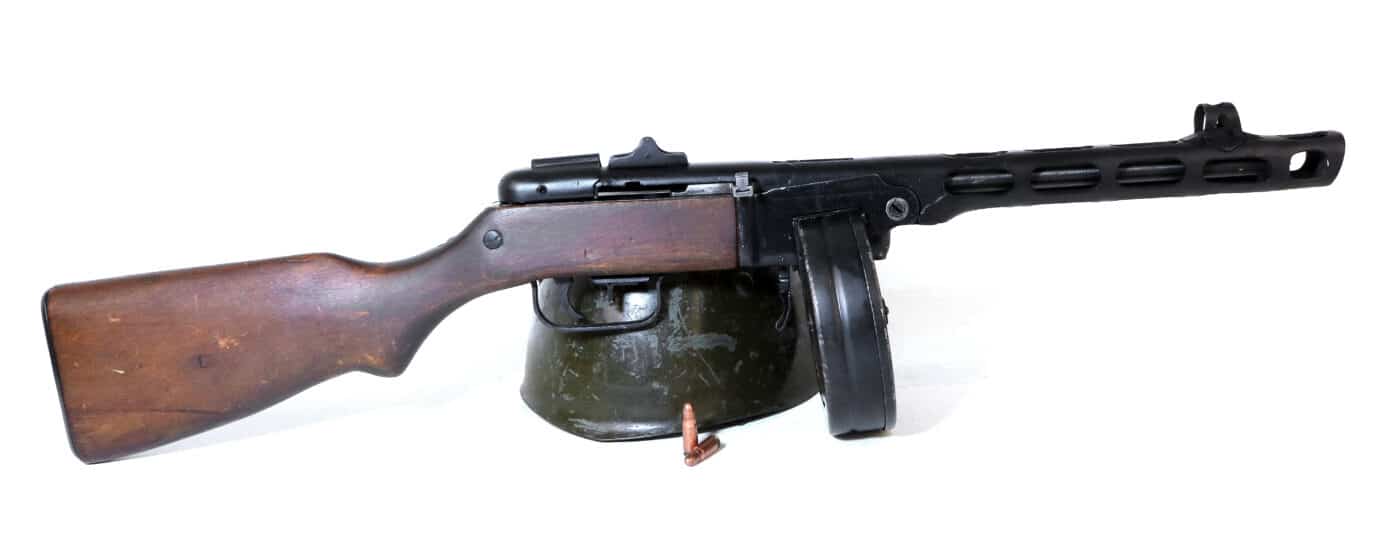
The Papasha was comprised predominantly of relatively crude steel stampings. The receiver and perforated barrel jacket were pressed out as a single component. The flip-adjustable sights were basic and unadorned, while the sundry details were rough and rugged. The muzzle end of the gun terminated in a brilliant pressed steel muzzle brake that tended to help minimize muzzle rise. The barrel jacket featured a series of cooling slots.
The magazine release was a pivoting thumb lever located on the midline. When not in use this appendage could be folded up and stowed against the bottom of the weapon. There was a sliding switch located inside the triggerguard that toggled between semi- and full-auto fire. The gun’s sole safety was a sliding component of the charging handle that could be snapped in toward the receiver to lock the bolt in either the open or closed positions.
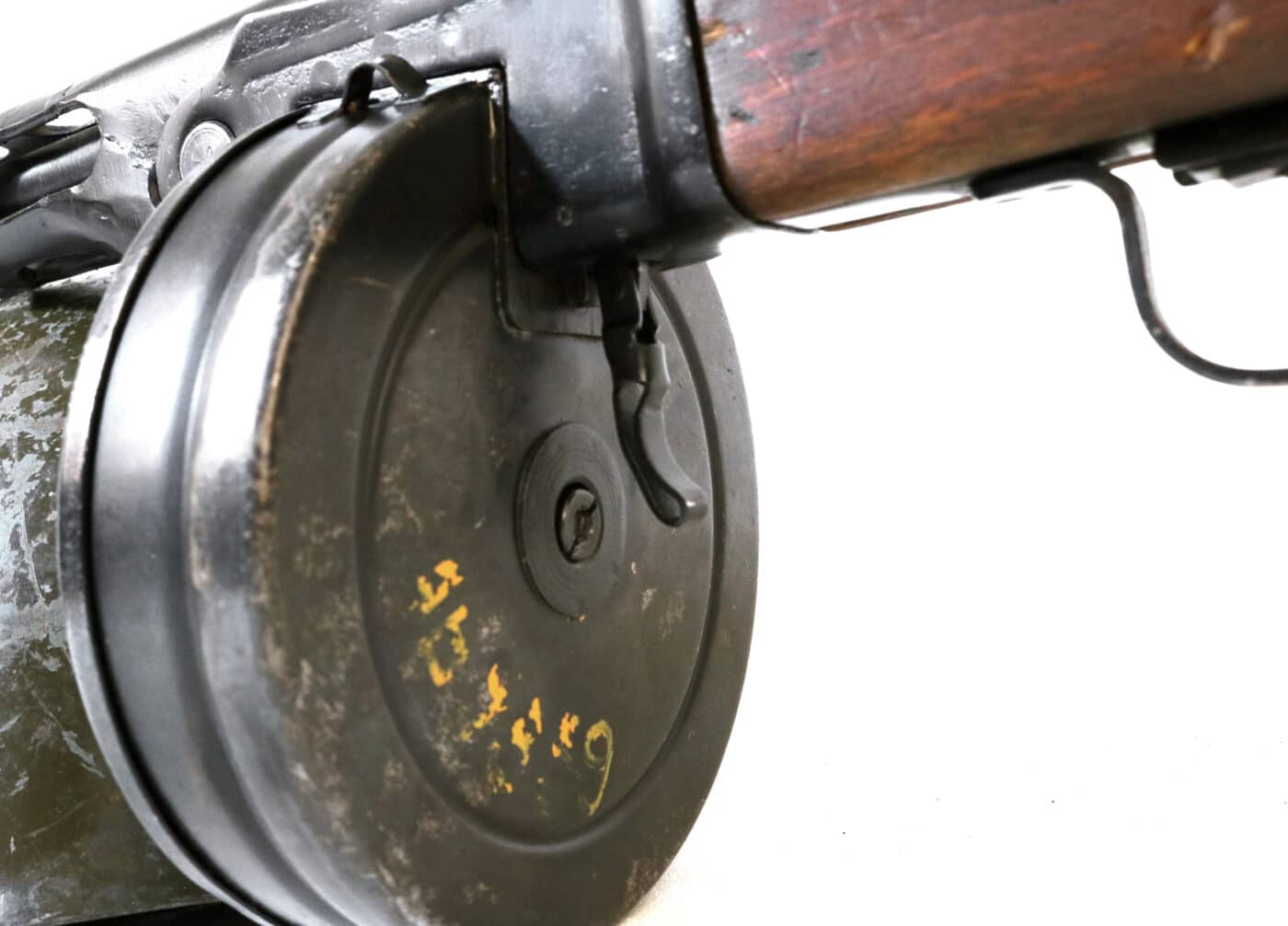
The bolt was chrome plated as was the bore, and there was a synthetic buffer in the back of the gun that looked like a screwdriver handle. Two PPSh barrels could be formed from a single Mosin-Nagant tube by cutting the rifle barrel in half and chambering both ends. The buttstock was simple and unadorned. Two drums were hand-fitted to each gun at the factory. The use of other drums ran the risk of a loose fit or poor reliability.
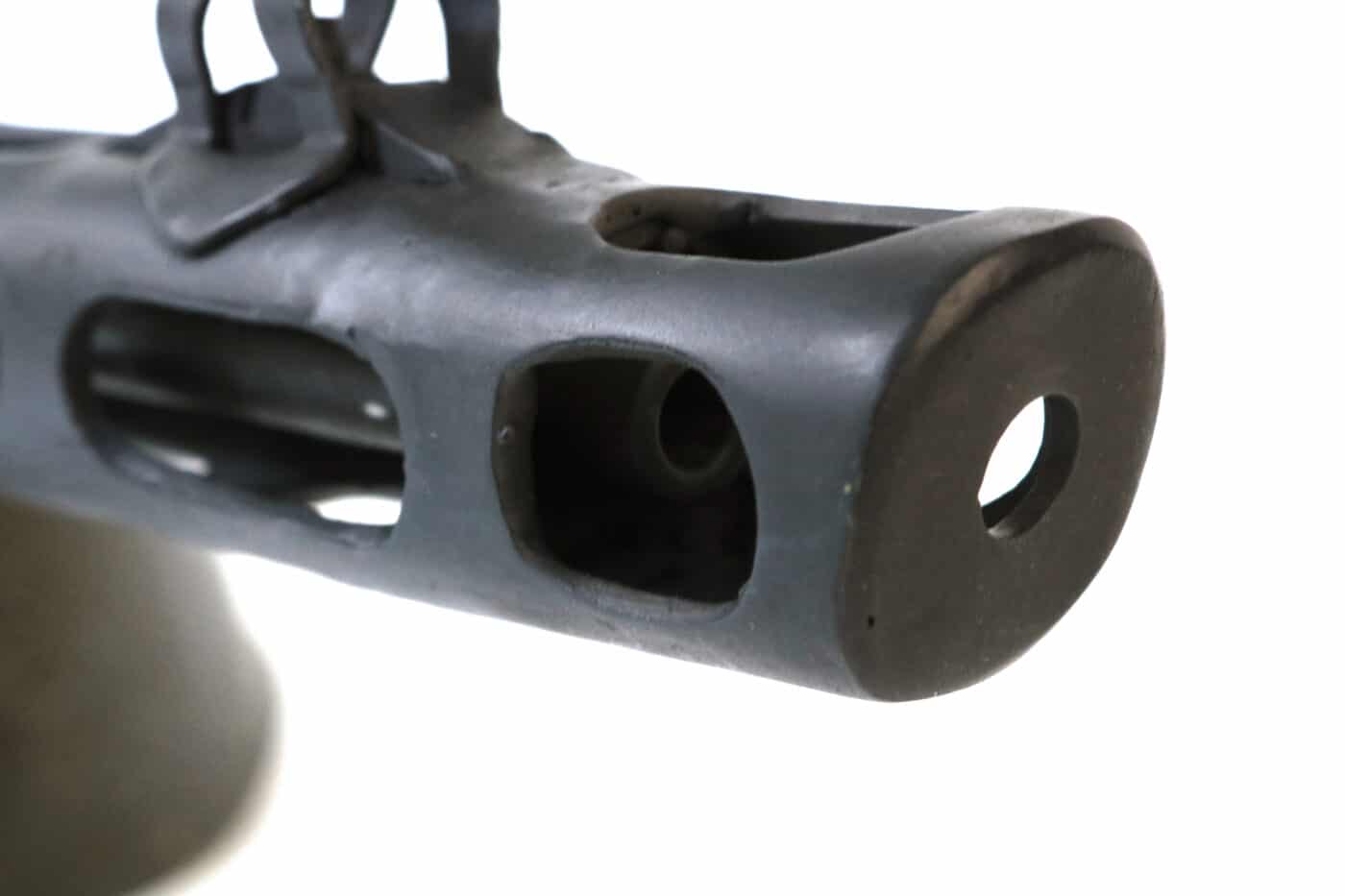
There were 87 parts comprising a PPSh, and the gun required 5.6 hours’ worth of machine time to produce. By comparison, the previous PPD consumed 13.7 hours. Only a few hundred weapons were in service by November of 1941. Another 155,000 rolled off the lines in the next five months. In 1942 Soviet industry had produced 1.5 million Papashas. By the end of the gun’s vigorous production run some six million copies had been built.
Practical Tactical
A great many experienced soldiers swore by the PPSh for its exceptional reliability and breathtaking close-range firepower. I myself do not care much for the gun. That might have something to do with the fact that the first burst I ever fired through a PPSh dropped a pair of hot empty cases down the back of my collar. The PPSh ejects straight up and with some vigor. When moving tactically that’s not a big deal. When stationary on the range, however, it’s like sitting under a shower of hot brass.
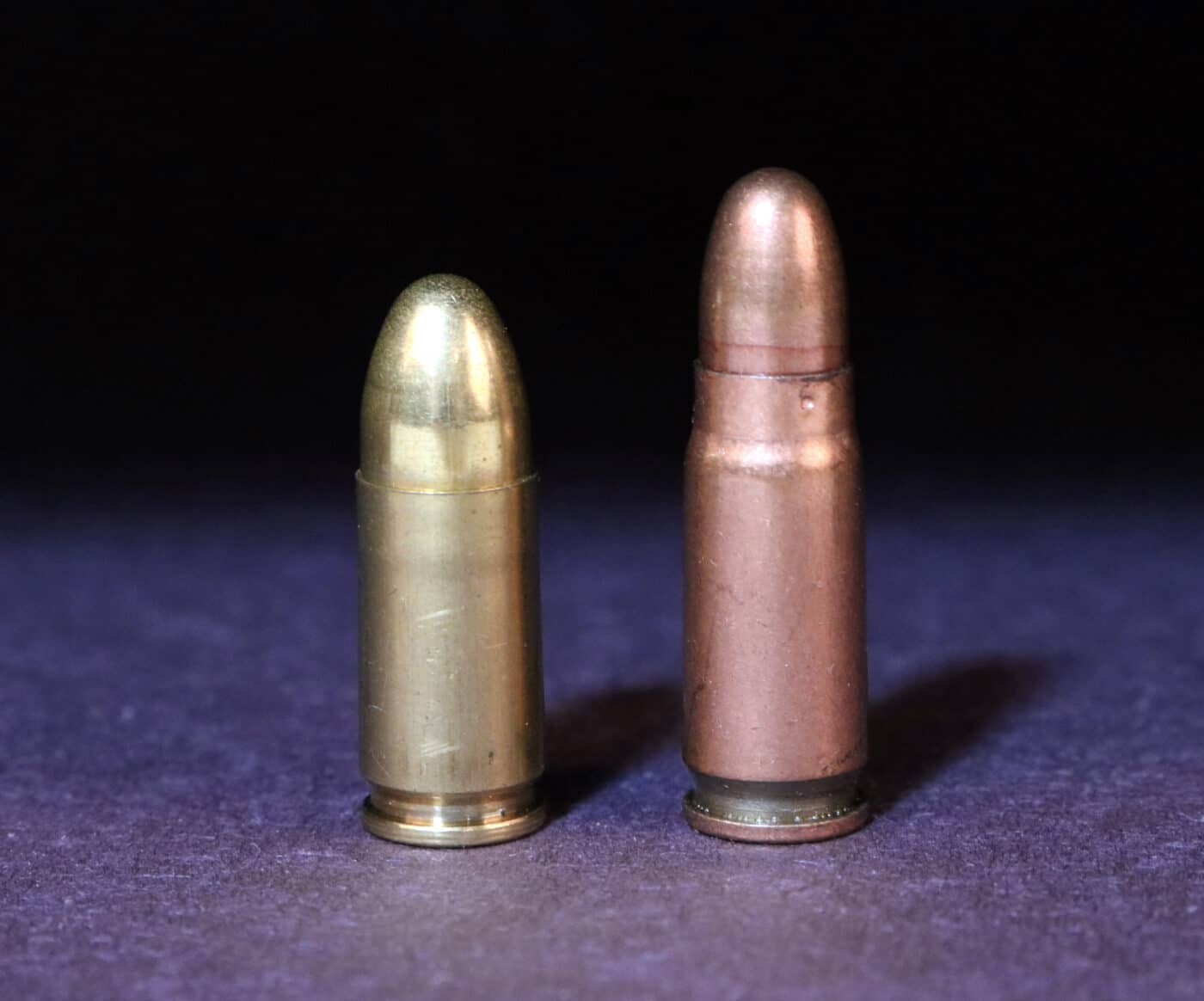
There’s not really a good place to put your support hand when running a drum-equipped PPSh. The weak hand can cup the stock behind the drum or just grab onto the side of the drum itself, but these are suboptimal solutions. Holding the barrel shroud risks burning your hands, and the angles are all wrong trying to reach around that fat drum. The curved 35-round stick magazine provides a much more comfortable purchase.
The 1,000-rpm rate of fire is a bit spunky for my tastes as well. The gun’s fully-loaded 12-pound weight when rocking a drum and its superlative design render it exceptionally controllable, but it still burns through ammo at a prodigious rate. A good gun will run in the face of the most egregious abuse with minimal maintenance.
Sincerest Form of Flattery
It became obvious in action that the PPSh was a game-changer on the battlefield. The zippy little 7.62x25mm round it fired offered ample penetration and minimal recoil, while the 71-round drum produced unprecedented firepower. This meant that German Landsers frequently used captured PPSh submachine guns in action against the Russians.
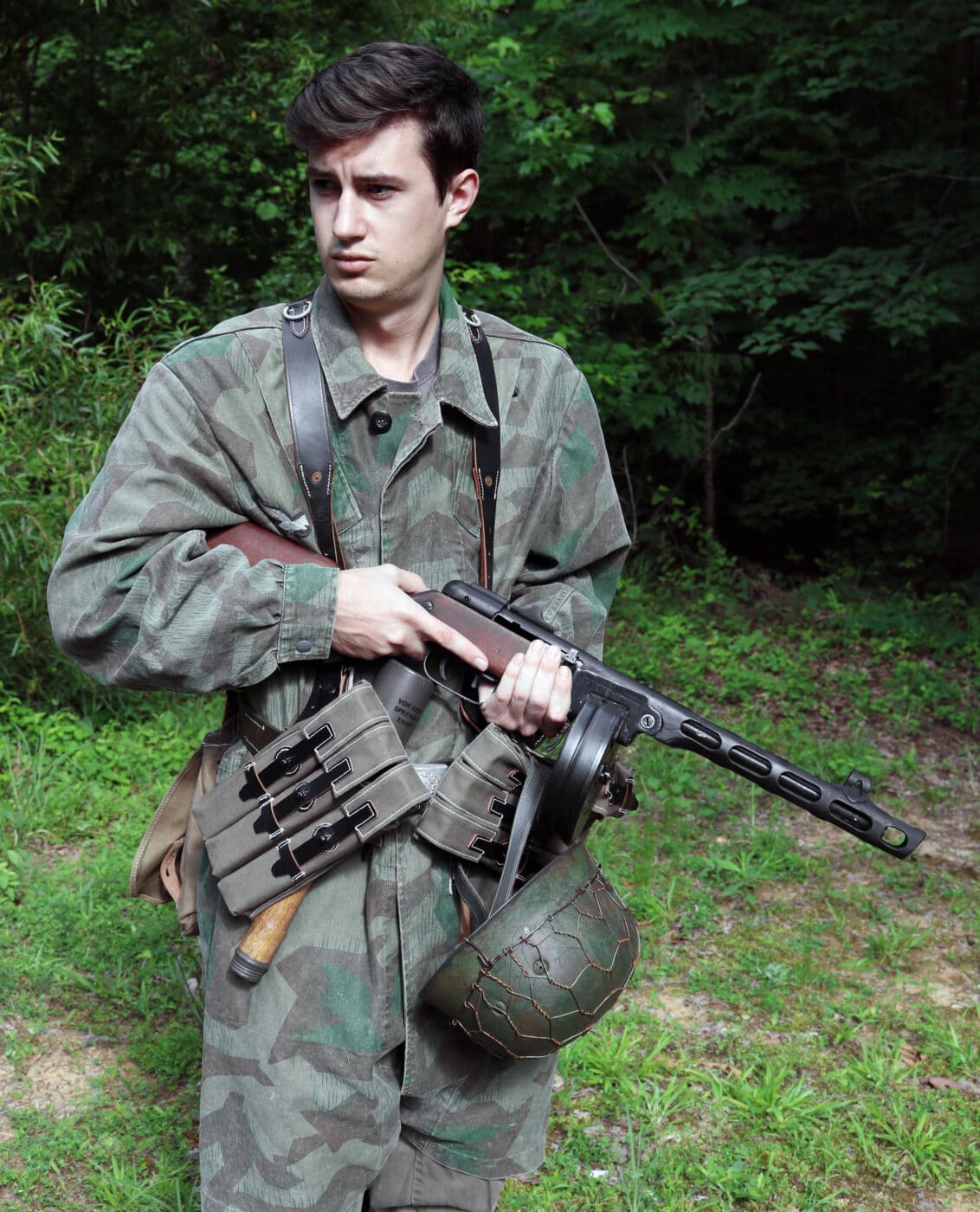
The Wehrmacht even undertook a program to convert captured PPSh’s to fire 9mm Parabellum. Conversion kits included a drop-in 9mm barrel and a magwell adaptor that allowed the Russian guns to feed from German MP40 magazines. These converted guns were designated the MP41(r) in German service. The same guns in their stock configuration were referred to as the MP717(r) and were fed dimensionally similar German 7.63x25mm ammunition.
The Russians also experimented with the PPSh as an airborne weapon. Multiple PPSh SMGs were fitted to fuselage racks affixed to the Tupolev-2 bomber. In this configuration, these ground attack planes produced a simply breathtaking volume of very short-range automatic fire. However, as the guns fired pistol cartridges the rounds lost energy quickly.
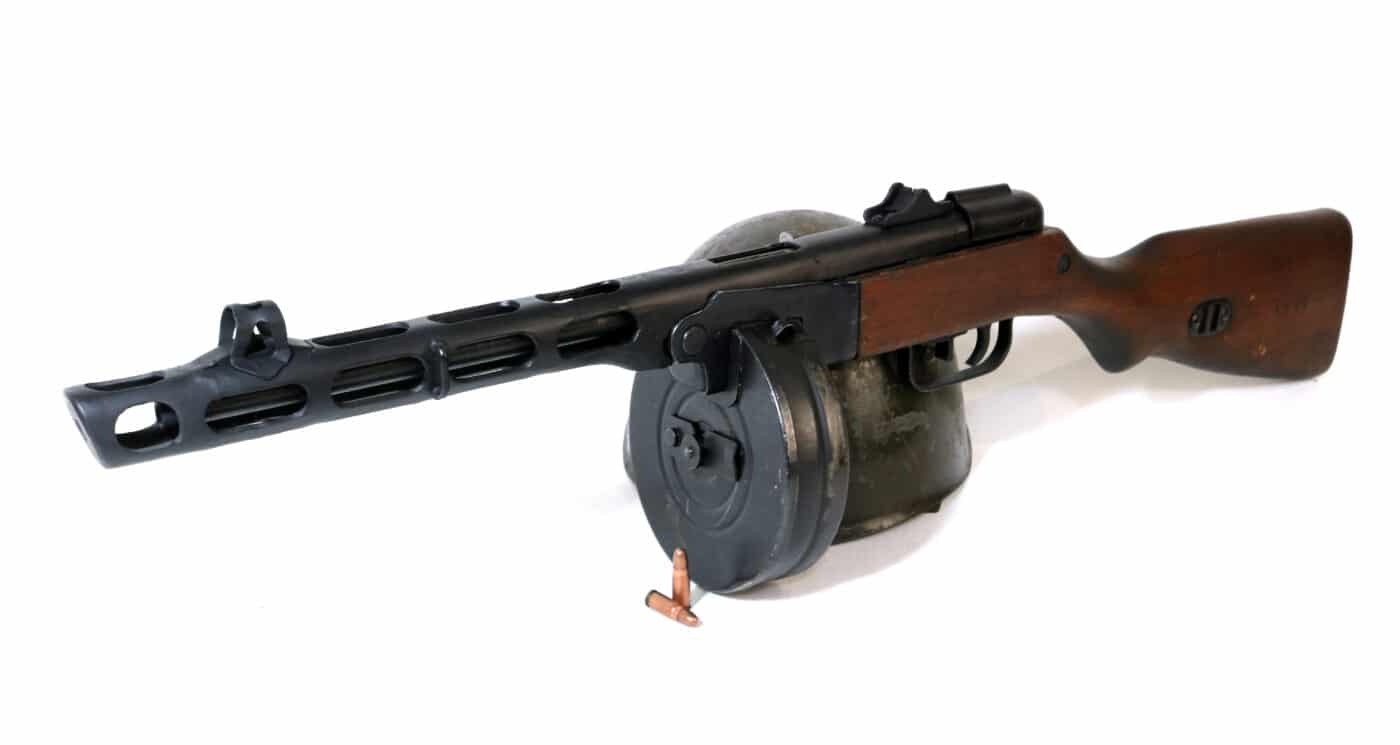
The PPSh was eventually supplanted by the yet simpler PPS-43. However, the communists shipped their surplus PPSh guns to puppet states and terrorist groups all around the globe. The PPSh saw widespread use during the Korean War in the hands of both North Korean and Chinese soldiers. The PPSh is still encountered in some of your less well-funded war zones even today.
The PPSh will never win any beauty pageants. However, when introduced it was effective, reliable, and available in quantity. These factors alone made the PPSh a legitimately war-winning weapon. In the sweaty hands of young conscript soldiers like Pavel Ivanovich Andreyev the PPSh helped beat back the fascist hordes. From the barren approaches to Moscow to the ghastly hell that was Stalingrad to the verdant fields surrounding Kursk, the PPSh could be found grappling with the Nazi juggernaut.
Special thanks to worldwarsupply.com for the reproduction gear used in our photographs.
Editor’s Note: Please be sure to check out The Armory Life Forum, where you can comment about our daily articles, as well as just talk guns and gear. Click the “Go To Forum Thread” link below to jump in!
Join the Discussion
Continue Reading
Did you enjoy this article?

 98
98






